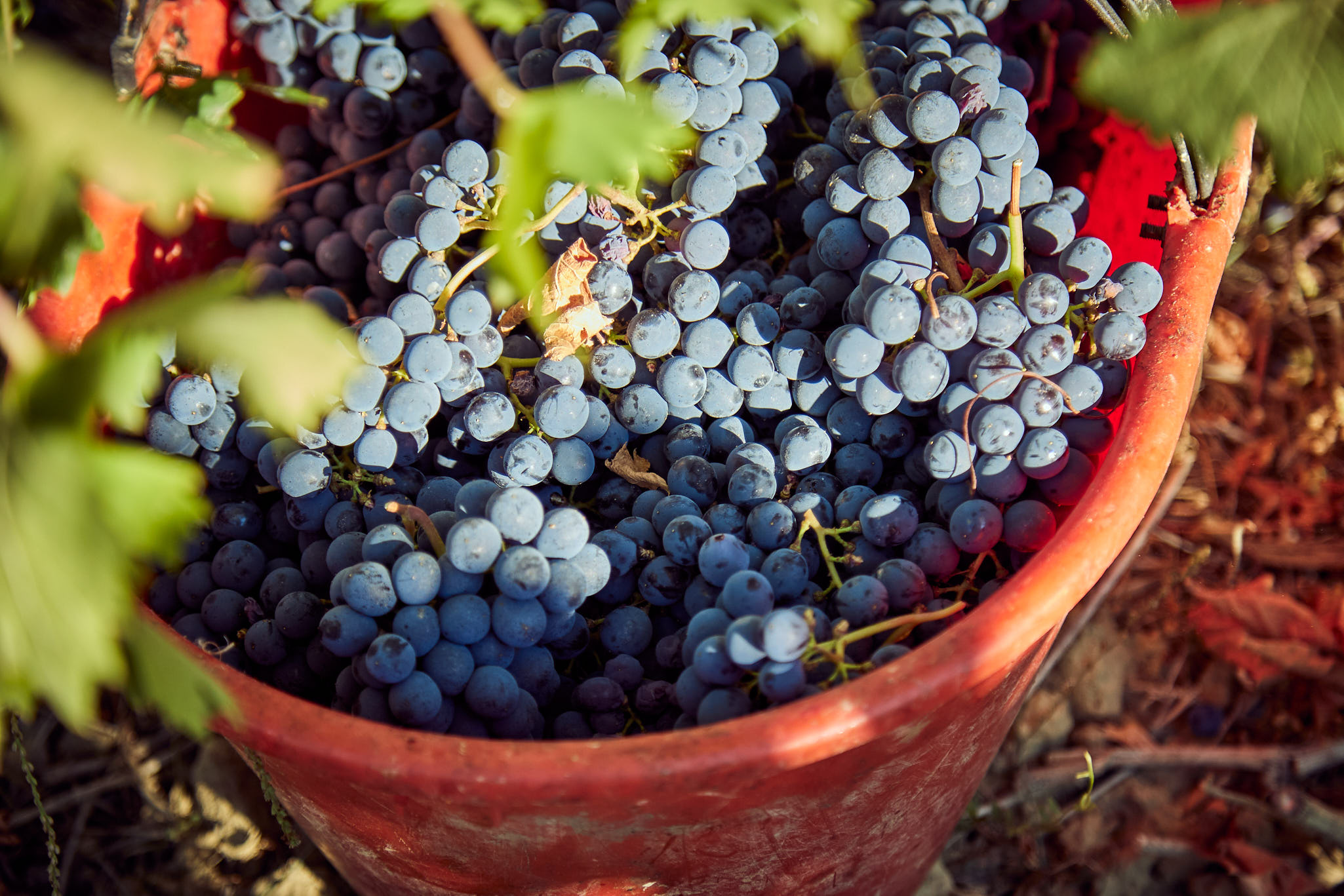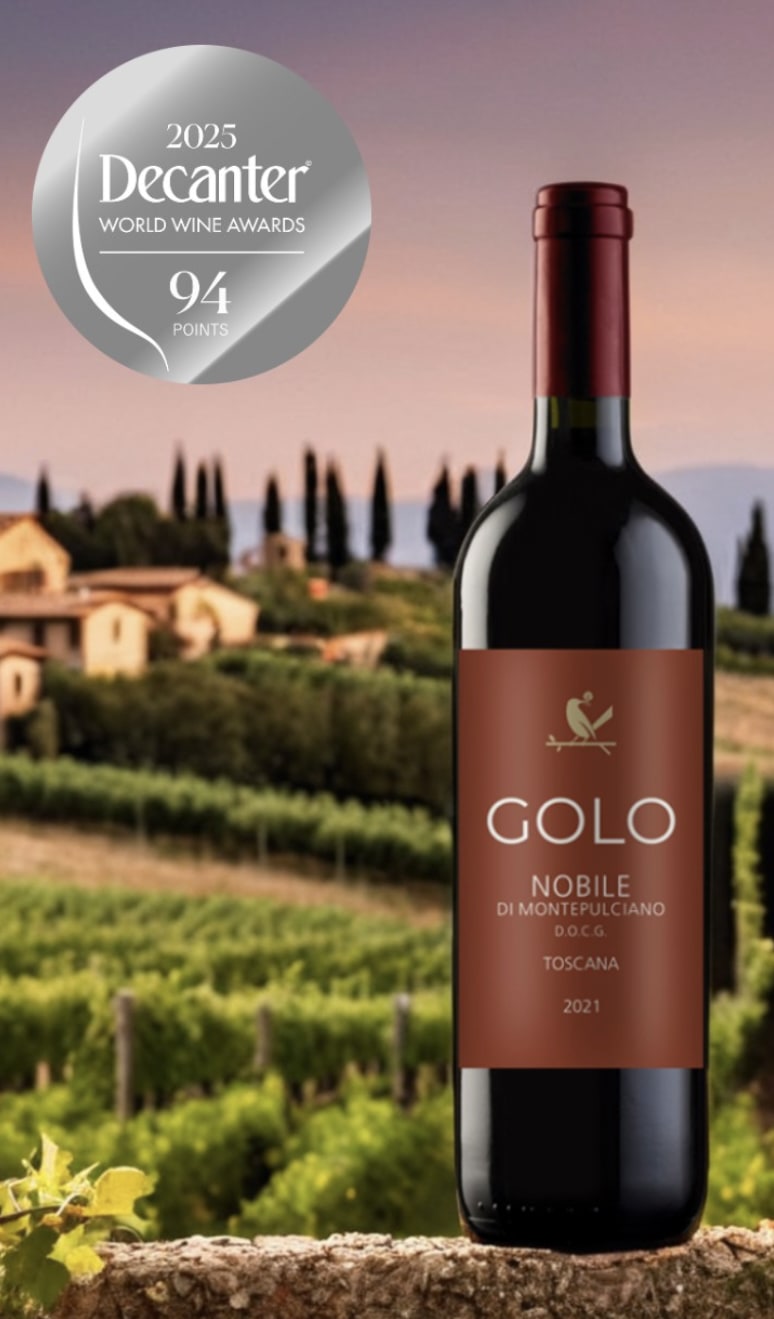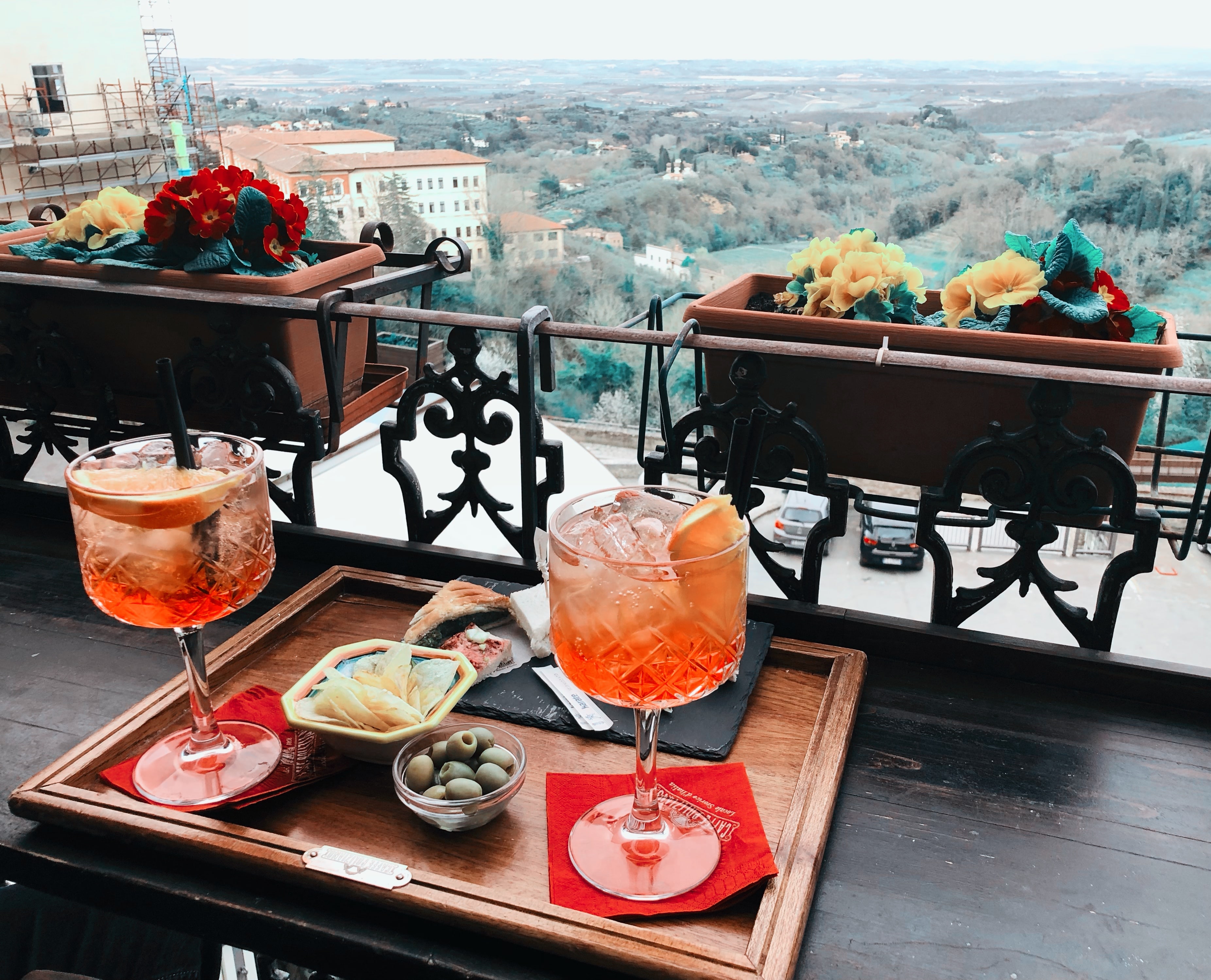Blind Wine Tasting Guide: Expert Tips for 2025
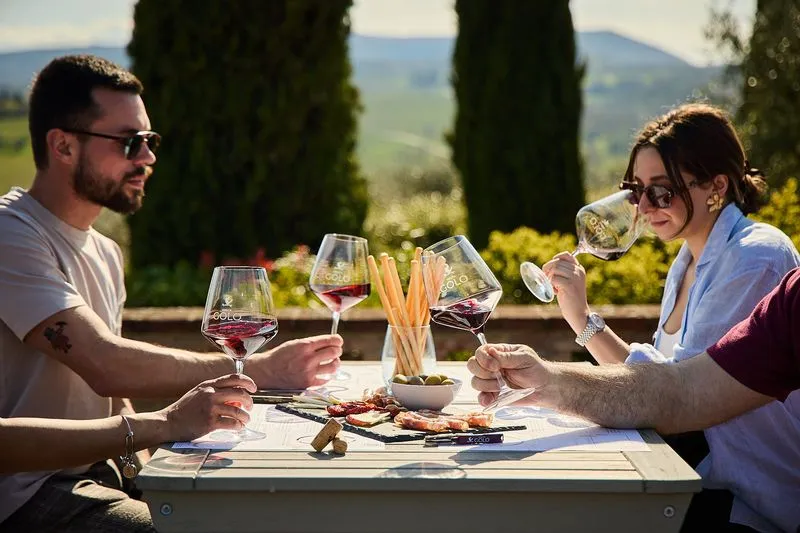
Imagine discovering a remarkable wine with no labels, prices, or reputations influencing your senses. This is the experience at the heart of blind wine tasting, a transformative approach that is changing how both newcomers and seasoned enthusiasts explore wine.
In this expert guide, you’ll uncover everything you need to master blind wine tasting in 2025. Expect practical advice, expert insights, and the latest tools to enhance your enjoyment, whether you’re hosting a party or refining your palate. Ready to unlock a world of unbiased wine discovery? Let’s begin.
What is Blind Wine Tasting and Why Does it Matter?
Blind wine tasting is a practice that strips away all preconceived ideas about a wine’s label, price, or origin. By tasting without knowing what’s in your glass, you open yourself to a world of unbiased discovery. This approach has deep roots in wine history and remains a cornerstone of both professional judging and casual gatherings.

The Fundamentals of Blind Wine Tasting
At its core, blind wine tasting means evaluating wine without any visual or brand cues. This method dates back centuries, but it gained modern prominence through events like the Judgment of Paris in 1976, where California wines unexpectedly outperformed French classics in a blind setting. That moment reshaped the global wine landscape and proved how easily perception can be influenced.
Blind wine tasting is equally at home in professional competitions and relaxed home parties. It creates a level playing field for novices and experts alike. Whether you’re pouring for friends or training for a sommelier exam, the process removes bias and encourages honest assessment. There are several formats:
| Type | Description |
|---|---|
| Single-blind | Tasters know the general category but not the exact wine |
| Double-blind | No information is given, not even the category |
| Black glass | Glasses obscure the wine’s color to remove visual clues |
Scientific research supports the value of blind wine tasting. Studies from Bordeaux and Texas A&M have shown that labels and prices can dramatically alter perceptions. In many tests, even experienced tasters struggle to distinguish costly bottles from inexpensive ones when all identifying features are hidden.
For anyone passionate about wine education or simply seeking a fair, fun way to explore new bottles, blind wine tasting is essential. It fosters genuine appreciation and highlights hidden gems that might otherwise be overlooked.
Unmasking Bias: The Psychology Behind Taste
Why do people often prefer one wine over another? The answer lies in the psychology of taste. Expectation, suggestion, and visual cues all influence our senses, sometimes more than the wine itself. Experiments where red and white wines are dyed to look alike have revealed that even trained tasters can be fooled by color.
Bias isn’t limited to appearance. Reputations tied to regions or high prices set expectations that affect enjoyment. Statistical studies regularly show that most consumers, and even professionals, cannot reliably tell expensive wines from budget options in blind wine tasting scenarios. This surprising fact underscores the importance of removing external cues to develop true sensory skills.
For both newcomers and seasoned enthusiasts, blind wine tasting encourages honest feedback. It helps tasters recognize their genuine preferences and strengths. Training plays a crucial role: research like the Impact of Training on Blind Tasting Accuracy demonstrates that structured practice can significantly improve one’s ability to identify wine characteristics and reduce bias.
Ultimately, blind wine tasting is not just a test of skill but a journey toward deeper understanding. By unmasking bias, you unlock a more authentic and rewarding wine experience.
Essential Supplies and Setup for Blind Wine Tasting
Pulling off a successful blind wine tasting begins with thoughtful preparation. The right supplies and setup can transform any gathering into an engaging and unbiased tasting experience. Whether you are hosting friends or practicing your skills, attention to detail is key for an authentic and enjoyable event.

Core Supplies Checklist
Every blind wine tasting starts with a solid lineup of wines. Choose bottles with purpose—think about mixing grape varieties, regions, or price points for a diverse and surprising selection. For true blind wine tasting, disguise each bottle using paper bags, neoprene sleeves, or foil, ensuring no one can peek at the label.
Glassware is equally important. Supply each participant with the proper number of glasses, ideally one per wine, to avoid rinsing between pours. Standard wine glasses work well, but uniformity ensures fairness. Scorecards and pens let guests jot down notes and guesses. You can opt for classic designs or themed cards for extra flair.
Palate cleansers like water, bread, or mild cheese keep taste buds fresh. Don’t forget practical items: corkscrews, napkins, and spit buckets for those who want to taste without overindulging. Use glass markers or charms so each glass is easily identified, especially in larger groups.
Here’s a quick checklist to keep your blind wine tasting organized:
| Item | Purpose |
|---|---|
| Wines | Variety, region, price diversity |
| Disguising Materials | Paper bags, sleeves, foil |
| Glassware | One per wine per person |
| Scorecards & Pens | Note-taking and scoring |
| Palate Cleansers | Bread, water, cheese |
| Tools | Corkscrews, napkins, spit buckets |
| Glass Identifiers | Markers, charms |
For more detailed tips on supplies and setup, check out this Wine tasting at home guide, which offers practical advice for organizing your next blind wine tasting.
Setting the Stage for Success
The environment you create is just as crucial as the supplies. Choose a well-lit space where participants can clearly see the wine’s color. Arrange the table so everyone has enough room for their glasses, notes, and palate cleansers. Seating guests around a circular or rectangular table fosters conversation and comparison.
Temperature management is vital: serve reds slightly below room temperature, whites chilled, and rosés in between. Use ice buckets or wine fridges to keep bottles at the right temperature before pouring. Background music should be soft and unobtrusive, enhancing focus without distraction.
Consider the flow of your blind wine tasting. Prepare a simple party checklist to track supplies, timing, and reveal moments. Use themed decorations or scorecards to set the mood. A well-planned setup encourages fairness and makes each tasting memorable.
A thoughtfully arranged space sets the tone for blind wine tasting, allowing guests to focus on the wine’s true character. When every detail is considered, the event becomes not just a test of taste but an experience to remember.
Step-by-Step: How to Run a Blind Wine Tasting in 2025
Hosting a blind wine tasting is both an art and a science. Whether you are a wine enthusiast or a curious beginner, following a clear process ensures your event is fair, fun, and insightful. Let us walk you through each step for a seamless 2025 experience.
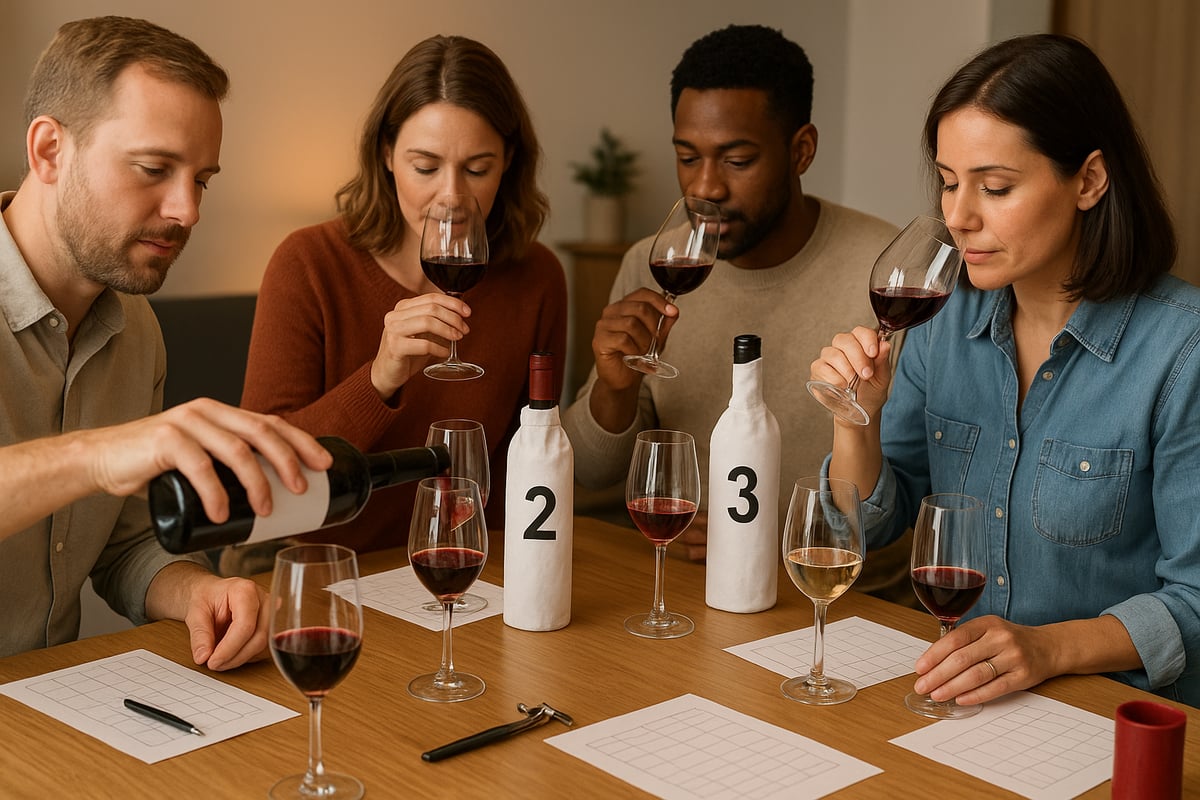
Step 1: Curate and Prepare Your Wines
Begin your blind wine tasting by selecting a theme. Do you want to compare all reds, a single varietal from different regions, or a mix of styles? Defining the scope helps focus the tasting and makes it more engaging for your guests.
Source your wines from local shops, trusted online retailers, or your own cellar. Aim for a range of price points and origins to keep things interesting. For most blind wine tasting events, 4 to 6 bottles is ideal, balancing variety with palate fatigue.
Chill whites and rosés ahead of time, and allow reds to breathe if needed. Decanting can enhance certain wines, so plan accordingly. Organize your bottles in the intended tasting order, but keep this information private until the reveal.
Nailing this preparation stage sets the tone for a smooth blind wine tasting. With a strong lineup and a clear focus, your event will start off on the right note.
Step 2: Conceal and Code the Bottles
To maintain objectivity, disguise each bottle before the blind wine tasting begins. The most common methods include:
| Concealment Method | Pros | Cons |
|---|---|---|
| Paper bags | Affordable, easy | Less elegant |
| Neoprene sleeves | Reusable, stylish | Costlier |
| Decanters | Hides all clues | More prep |
Label each bottle with a random code or number. Avoid any patterns that might give away hints about the wine’s identity. Shuffle the bottles before the tasting starts, so even the host cannot predict the order.
This step is crucial for a truly unbiased blind wine tasting. Taking the time to carefully code and mix up bottles ensures no one can guess based on appearance or sequence.
Step 3: Pouring, Serving, and Glass Management
Proper glassware is essential for evaluating wines accurately during a blind wine tasting. Ideally, provide one glass per wine per guest, but if that is not possible, rinse glasses thoroughly between pours.
Pour about 1.5 ounces per tasting, enough to swirl and assess but not so much that it overwhelms the senses. Use glass markers or charms to help guests keep track of which wine is which.
Set up a water station and palate cleansers like plain bread or crackers. These small touches help maintain clarity and enjoyment throughout the blind wine tasting experience.
Step 4: Tasting and Scoring
Guide your guests through a structured tasting sequence: first observe the wine’s appearance, then swirl and smell, taste, and finally consider the finish. Encourage everyone to record their impressions using detailed scorecards.
Rate each wine on aroma, taste, balance, and overall impression. For more guidance on evaluation, see these best tasting wine tips, which can help both novices and seasoned tasters sharpen their skills.
Add a fun twist by challenging guests to guess the grape, region, or price of each wine. Introducing competitive elements can energize your blind wine tasting, making it memorable and educational.
Step 5: Reveal and Discuss
Once every wine has been tasted and scored, it is time for the big reveal. Uncover each bottle, announce the details, and compare them to the group’s guesses and notes.
Facilitate an open discussion, inviting guests to share their thoughts and surprises. Recognize top tasters, award small prizes, or simply celebrate the most popular wine of the night.
A well-structured blind wine tasting wraps up with a sense of discovery and camaraderie. These final moments turn your event into a learning experience that will be remembered long after the last glass is emptied.
Expert Tips for Evaluating Wines Blind
Evaluating wines during a blind wine tasting requires a blend of sensory training, methodical note-taking, and group engagement. Whether you aspire to judge professionally or simply want to sharpen your enjoyment, mastering these skills will elevate every tasting.
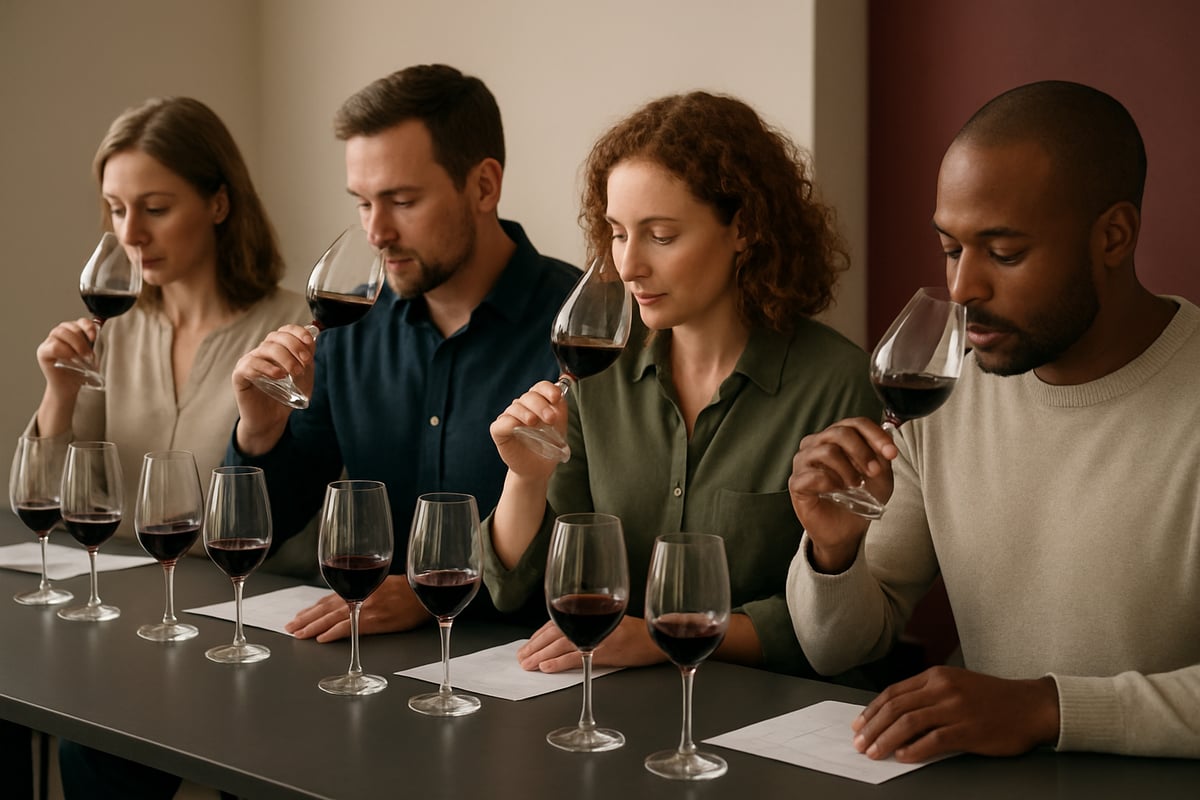
Developing Your Palate Like a Pro
Building your sensory skills is the foundation of blind wine tasting. Start by tasting a wide variety of wines regularly, focusing on common grape varieties and regions. Approach each glass with curiosity, noting differences in aroma, flavor, and texture.
Use a systematic approach. First, observe the wine’s color and clarity. Swirl, then smell deeply, identifying layers of fruit, floral, spice, or earth notes. On the palate, pay attention to structure: acidity, tannin, sweetness, and body. Finish by noting the length and complexity.
Common descriptors to consider:
| Aroma | Taste | Finish |
|---|---|---|
| Citrus | Fruity | Short |
| Floral | Spicy | Long |
| Herbal | Earthy | Bitter |
| Oak | Mineral | Smooth |
Practice with friends or solo, and challenge yourself by tasting wines from black glasses or in dim lighting to minimize visual bias. Avoid overthinking—trust your instincts and record first impressions. With regular blind wine tasting, your palate will grow more confident and precise.
Scoring and Note-Taking Techniques
Professional blind wine tasting relies on clear, consistent scoring and detailed notes. Use a structured scorecard to rate wines on appearance, nose, palate, and overall impression. Assign points or descriptive ratings for each category.
Balance objectivity with personal enjoyment. While scoring systems like 100-point scales or 5-star ratings are common, your unique reactions matter. Note not just what you taste, but how the wine makes you feel.
Recognize common wine faults to improve accuracy:
- Cork taint (musty or wet cardboard aroma)
- Oxidation (flat, dull flavors)
- Volatile acidity (sharp, vinegar-like smell)
If you’re interested in the science behind scoring, consider Assessing the Reliability of Blind Wine Tasting for a deeper look at consistency in evaluations. Professional judges often calibrate with group tastings to maintain fairness and minimize bias, ensuring that blind wine tasting results are meaningful and repeatable.
Navigating Group Dynamics
Blind wine tasting is most rewarding when everyone feels included and respected. Foster open discussion by encouraging guests to share their thoughts without fear of judgment. Emphasize that there are no wrong answers—wine appreciation is subjective.
Keep the tone light and educational. Use icebreakers, themed scorecards, or friendly competitions to engage participants. If disagreements arise, view them as learning opportunities. Remind the group that diversity of opinion is a strength in blind wine tasting.
Tips for smooth group tastings:
- Rotate who leads each round
- Mix novices and experienced tasters
- Celebrate unique or unexpected discoveries
By prioritizing inclusivity and curiosity, every blind wine tasting becomes an opportunity for collective growth and enjoyment.
Blind Wine Tasting Trends, Tools, and Innovations for 2025
Blind wine tasting is evolving rapidly in 2025, blending tradition with cutting-edge advancements. Whether you are a seasoned enthusiast or just beginning your journey, staying updated on the latest trends and tools can elevate every tasting experience. Let’s explore what’s redefining blind wine tasting this year.
New Tools and Technology
The landscape of blind wine tasting is experiencing a digital transformation. Today, digital scorecards and tasting apps are replacing paper notes, making it easier to track impressions and share results instantly. Smart decanters and temperature control devices ensure each wine is served at its ideal conditions, removing guesswork from the process.
Virtual and hybrid tasting events have also surged in popularity. With these technologies, participants can join from anywhere, making blind wine tasting more accessible than ever. Expect further integration of artificial intelligence in palate analysis and wine identification as 2025 progresses.
| Tool/Trend | Description |
|---|---|
| Digital Scorecards | Real-time tasting notes and scoring |
| Smart Decanters | Automated aeration and temp control |
| Tasting Apps | Guided tastings and wine education |
| Virtual Events | Remote participation and learning |
These innovations are changing the way blind wine tasting is enjoyed, making it more interactive and inclusive.
Popular Themes and Formats
Blind wine tasting in 2025 is all about creativity and exploration. Themed tastings, such as Old World versus New World regional battles, bring a competitive edge and highlight global diversity. Price point challenges, where participants compare affordable and premium bottles, often lead to surprising favorites.
Wine style explorations are also trending. Tasting natural, organic, or orange wines blind removes bias and sparks lively discussion. Hosts are customizing events to match pop culture, holidays, or local traditions, ensuring every blind wine tasting feels fresh and memorable.
These formats encourage discovery, making each event a unique journey for all involved.
Social and Educational Benefits
The social side of blind wine tasting continues to flourish. Wine education programs and sommelier training now rely heavily on blind tastings to build unbiased sensory skills. Clubs and online communities dedicated to blind wine tasting are growing, offering support, resources, and shared experiences.
Public events, from casual meetups to international competitions, are more accessible thanks to technology. These gatherings foster camaraderie and knowledge sharing, making blind wine tasting a cornerstone of modern wine culture.
Whether in-person or online, the educational value and sense of community are stronger than ever.
Data-Driven Insights
Recent studies have highlighted the power and challenges of blind wine tasting. Research shows that even experienced tasters can be influenced by expectations and context. In fact, statistical analysis such as Evaluating Wine-Tasting Results and Randomness reveals how randomness and personal preference affect results, emphasizing the importance of rigorous tasting design.
These insights help organizers understand the strengths and limitations of blind wine tasting. They also underscore its value for uncovering hidden gems and challenging assumptions about price and quality.
As more consumers and professionals engage with data-driven approaches, blind wine tasting will continue to evolve, ensuring fair, insightful, and enjoyable experiences for all.
Hosting Memorable Blind Wine Tasting Parties
Hosting a blind wine tasting party is a unique way to bring people together, spark conversation, and cultivate a deeper appreciation for wine. Whether your guests are newcomers or seasoned enthusiasts, careful planning ensures everyone enjoys an engaging and educational experience.
Planning for Groups: Logistics and Fun
The ideal group size for a blind wine tasting is six to twelve guests. This keeps the event interactive but manageable. Invite a mix of friends with varying wine knowledge to encourage lively discussion.
Set up a table with enough space for each participant's glasses, scorecards, and snacks. Offer palate cleansers, such as breadsticks or mild cheese, and select a playlist that complements the mood. For those eager to elevate their skills, consider sharing resources like Wine tasting course insights to help guests develop their palate between tastings.
Short, well-paced rounds and an inviting atmosphere make every blind wine tasting more memorable.
Competition and Prizes
Adding a competitive edge to your blind wine tasting can boost excitement and participation. Create categories such as "Best Guesser," "Favorite Wine," or "Most Creative Descriptor."
Prize ideas include wine accessories, a bottle of the winning wine, or vouchers for local wine experiences. To share costs, ask each guest to contribute a bottle or split expenses for supplies. This fosters a sense of investment and camaraderie throughout the blind wine tasting.
Encourage friendly competition, but keep the focus on learning and enjoyment.
Overcoming Common Challenges
Palate fatigue is a common issue during blind wine tasting, especially with a larger flight of wines. Limit the number of bottles to six or fewer, and provide water for rinsing between samples.
Ensure fairness by randomizing the order of pours and keeping identities secret until the reveal. If there is a tie or close result, consider a tiebreaker round or a group vote. Addressing these challenges helps maintain the integrity and fun of your blind wine tasting event.
Clear rules and flexibility support a smooth experience for all.
Example Party Itinerary
A well-structured itinerary sets the pace for a successful blind wine tasting. Use this sample two-hour schedule:
| Time | Activity |
|---|---|
| 0:00-0:15 | Welcome, explain rules, pour first round |
| 0:15-1:00 | Tasting and scoring (3 wines) |
| 1:00-1:15 | Break, palate cleansers, snacks |
| 1:15-1:45 | Tasting and scoring (remaining wines) |
| 1:45-2:00 | Reveal wines, discuss, award prizes |
Flexibility is key. Adjust the flow based on your group’s preferences and engagement level. With thoughtful preparation, every blind wine tasting party can be both educational and unforgettable.
Frequently Asked Questions About Blind Wine Tasting
Curious about blind wine tasting? Here are answers to the most common questions, helping you plan, participate, and get the most out of every tasting, whether you are a beginner or a seasoned enthusiast.
How many wines should I include in a blind wine tasting?
For most groups, four to six wines is ideal. This range keeps palates fresh and allows for meaningful comparison without overwhelming participants.
What’s the difference between blind, double-blind, and “black glass” tastings?
In a blind wine tasting, you know nothing about the wine except perhaps its type or region. Double-blind means all specifics are hidden, sometimes even from the organizer. “Black glass” tastings use opaque stemware to disguise the wine’s color, removing visual cues entirely.
How do I choose the right wines for my group?
Consider your guests’ experience levels and preferences. Select a mix of varietals, regions, or price points. For themed tastings, choose wines that fit a region, grape, or style. Balance familiar options with a few surprises.
Can beginners enjoy and benefit from blind tastings?
Absolutely. Blind wine tasting is a great equalizer, helping novices and experts focus on taste rather than reputation. It encourages open discussion and develops sensory skills in a fun, pressure-free setting.
What are some common mistakes to avoid?
Avoid serving too many wines, neglecting palate cleansers, or revealing clues about the bottles. Keep the atmosphere relaxed, and remind guests there are no wrong answers.
How does blind tasting improve wine knowledge and enjoyment?
Blind wine tasting sharpens your palate and removes preconceptions. It helps everyone learn to trust their senses, recognize subtle differences, and even discover new favorites often overlooked due to branding or price.
Are there recommended resources or scorecard templates for 2025?
Many wine education websites offer updated scorecards and tasting sheets. For a scientific approach, explore Learning to Taste: A Multimodal Wine Dataset, which offers insights into how visual, linguistic, and sensory data interact in wine tasting.
What are the best palate cleansers for wine tastings?
Use plain water, unsalted crackers, or mild bread between wines. Here’s a quick comparison:
| Palate Cleanser | Pros | Cons |
|---|---|---|
| Water | Hydrating, neutral | None |
| Plain crackers | Absorbs flavors | Can be filling |
| White bread | Mild, effective | Allergy risk |
With these answers, you are ready to make your next blind wine tasting both enjoyable and educational.
If you’re feeling inspired to put these blind wine tasting tips into practice—and truly experience the magic of unbiased discovery—why not take it a step further? At Tenuta Golo, you can immerse yourself in a curated tasting amid the rolling hills of Montepulciano, guided by expert hosts who love sharing their passion and insights. Enjoy the unique flavors of Nobile di Montepulciano DOCG wines in the tranquil setting of a 17th century estate, where every detail is designed to enhance your appreciation and enjoyment. Ready for your own unforgettable tasting journey? Book Your Wine Tasting Now


